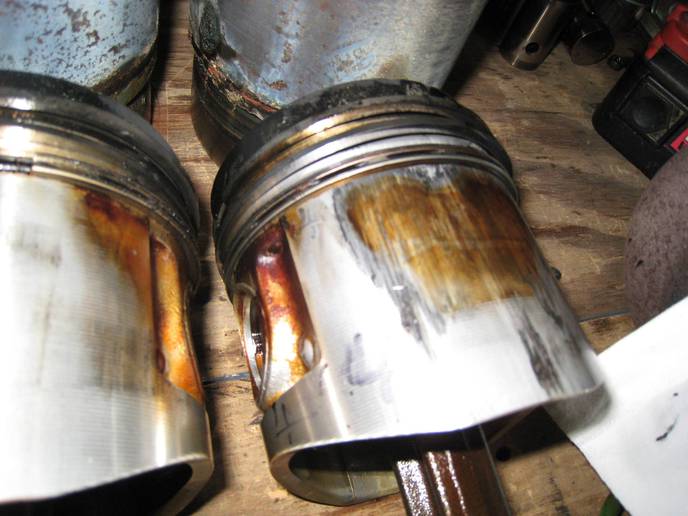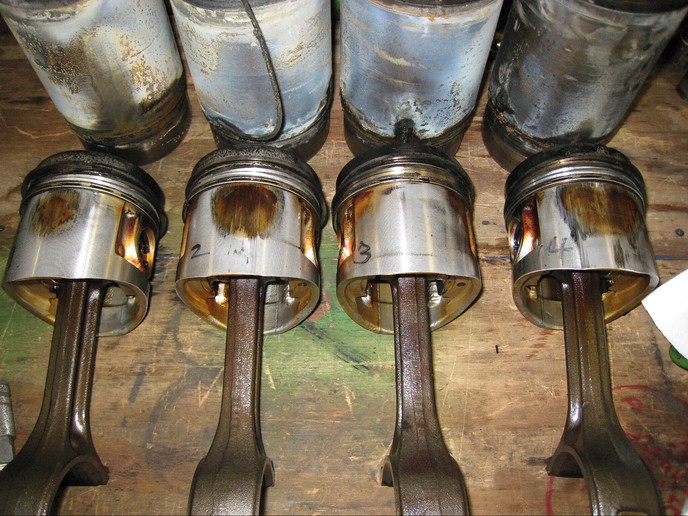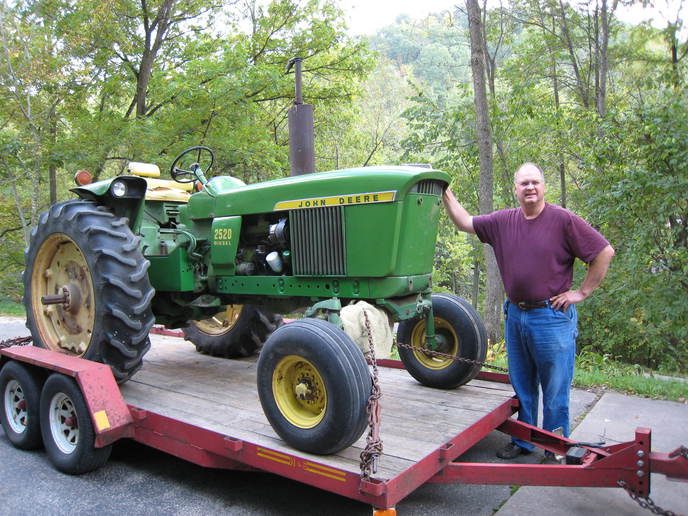2-3 years ago I purchased a 1971 2520 with an engine knock. The owner said it had been overhauled. It seems his mechanic must of overhauled the head and maybe the rings. Compression is 370-380 psi (very good) on all four cylinders as tested by a diesel injection shop. The same shop felt the knock was coming from the number 4 cylinder. The reason I had it at a diesel injection shop is I was wondering if the knock was fuel related. They said it wasn't, the injectors and pump were setup correctly.
The next step is I removed the timing gear cover. To make a long story short, backlash, idler gear bearings, and balancer shaft bearings all seemed good.
The next step is I removed the pan and crank. The rod bearings and crank did not look bad at all. I did send the crank to a machine shop for inspection. They felt it needed a 10/10 machining, a light machining on the rod and bearing lands (terminology?). By the way, rod bearings were date coded 1989.
Now my question, I removed the pistons and cylinders (sleeves). Note in the picture the wear on the sides of the pistons 90 degrees from the wrist pins. What would cause this? Is this my knock? Note #4 piston is the worst.
Comments sure would be welcome. Paul

The next step is I removed the timing gear cover. To make a long story short, backlash, idler gear bearings, and balancer shaft bearings all seemed good.
The next step is I removed the pan and crank. The rod bearings and crank did not look bad at all. I did send the crank to a machine shop for inspection. They felt it needed a 10/10 machining, a light machining on the rod and bearing lands (terminology?). By the way, rod bearings were date coded 1989.
Now my question, I removed the pistons and cylinders (sleeves). Note in the picture the wear on the sides of the pistons 90 degrees from the wrist pins. What would cause this? Is this my knock? Note #4 piston is the worst.
Comments sure would be welcome. Paul




